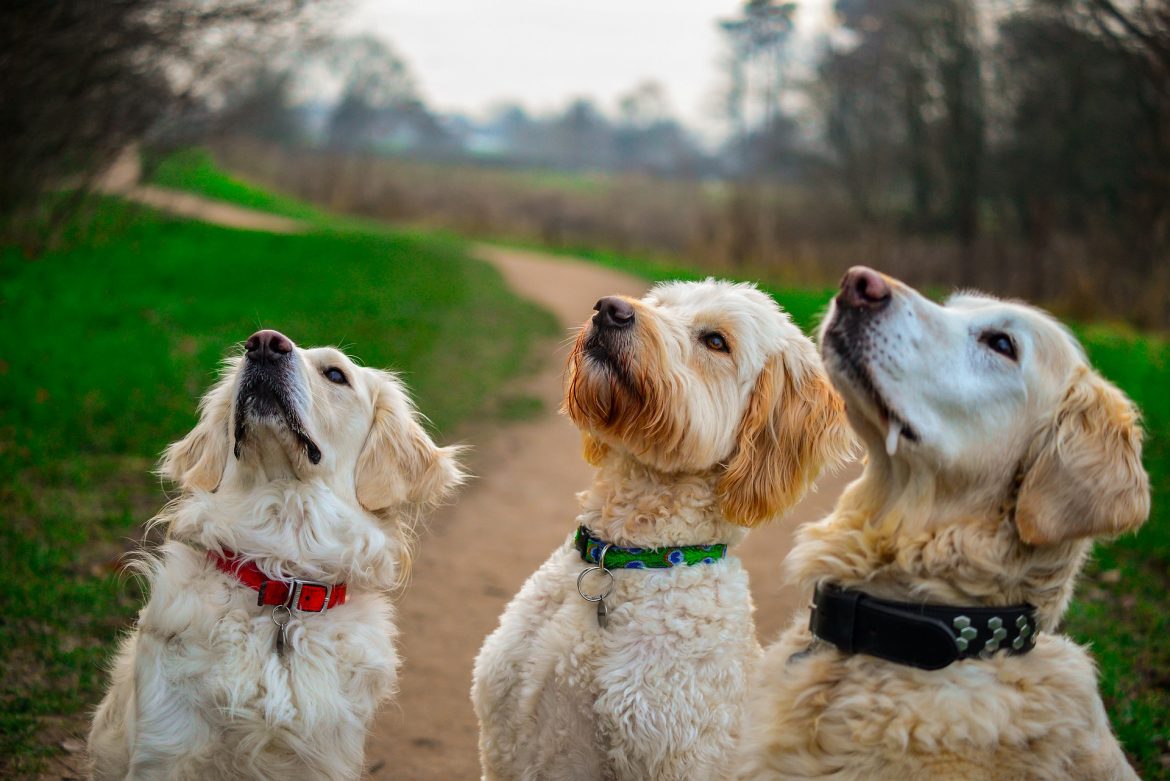What is positive reinforcement dog training? You’ve probably heard the phrase floating around at the dog park, in conversations with local Dog Walkers, and here on our blog. But what does it actually mean? How effective is it? Is it just a fad?
In this article, we’re going to cover all of your questions about positive reinforcement dog training. We’ll also share some tips to help you get started.

What is positive reinforcement dog training?
As helpful as behavioural science is in the world of dog training, the theory can be a bit wordy. True, researchers throw around phrases like “positive punishment,” “positive correction,” “positive reinforcement,” and more. However, how are Dog Owners supposed to know what’s good and what’s bad?
Here’s how to understand it for your personal positive reinforcement dog training. Positive, in behavioural science, simply means that you, the Dog Owner, are adding something. Negative means that you’re taking something away.
In other words, positive punishment means that you’re giving your dog a correction when they do something wrong. In some cases it could be a yank, while in others it could be a reprimand.
By contrast, positive reinforcement or reward-based training is when you reward your dog when they do something dog. Of course, a “reward” can range from a treat to a happy verbal cue.
Negative punishment technically means that you’re taking away what your pup wants if they don’t perform the desired behaviour. It can be effective in certain situations – for instance, having your dog sit until you give them dinner. However, anything more complex can confuse your pup.
What are the challenges of positive punishment (i.e. reasons why we should ditch it)
For many years, we trained dogs by punishing them when they did something wrong. The idea was that a Dog Owner, Dog Trainer, or Dog Walker should be the Alpha dog.
The truth is, though, dogs don’t understand complex cause and effect. Instead, they learn through very direct and timely action and response. A pup may learn, for instance, not to put their nose in an older dog’s food bowl because of that one time that the older doggo snapped at them. This young pup did something that caused an unpleasant response and learned not to do it anymore. Technically, this is an example of positive punishment.
The issue with relying on this form of training is that it’s hard to create the connections you’re looking for. If you’re walking your dog with a choke collar, they may not recognise that their actions are causing their pain. Instead, they might simply learn to fear the collar itself, or conclude that the outside world is a dangerous place.
For other behaviours, it can be hard to pull off the timeliness element. Say you yell at your dog after coming home to find that they had buried their toys in the backyard. Not only do they not understand why you’re yelling at them – remember, digging can be an evolutionary drive – but it’s also far too late to correct the behaviour. For all they know, you might be yelling at them because of something else they did that day, like licking the kitchen floor or not greeting you enthusiastically enough when you walked through the door.
The big problem here is that punishment isn’t just stressful for your pup, but it can increase unwanted behaviour. A stressed dog can freeze up of of confusion or fear or lash out with aggression.
Our final issue with positive punishment is that it can get impair a strong and supportive bond with your dog. When you rely on this training method, you start to focus more on your dog’s naughty behaviours. This, in turn, can lower their confidence and your trust in them. It’s just not a good way to foster a good training relationship.
How does positive reinforcement dog training compare?
When you give your dog a reward when they do what you want, they’ll connote that action with a reward.
Instead of your doggo thinking of all of the possible reasons they might be receiving a punishment, positive reinforcement gives them a clear cause and effect. With such a clear path, and the complete elimination of fear, they’ll discern what you want from them much faster.
Another key difference here is that positive reinforcement dog training encourages your dog to try new things. Rather than being paralised with fear of punishment, your doggo will start thinking: “I can trust my Owner to tell me what they want from me. If I keep focusing and trying my best, I will get my reward.” Indeed, dogs trained with this method tend to look more frequently at their Owners for direction.
Positive reinforcement dog training isn’t just a recent fad or trend. It’s the main training method used for dogs in high-risk fields. Bomb-sniffing dogs, guide dogs, and other service and working dogs are frequently trained using this method, simply because it’s fastest and effective. The experts know that if you want a confident, self-assured, and calm dog, positive reinforcement dog training is the way to go.
How to begin with positive reinforcement dog training
The key to successful positive reinforcement dog training is consistency. Think about the behaviours you want to see in your dog and then reward them every single time you see them. This is the only way that your dog will learn that good behaviours equal rewards.
Clicker training is a great tool here because it can communicate to your dog when they’re doing something correctly without having to give them a treat every time. Make sure to take some time to establish a strong link between treats and the clicker before you rely only on the clicker.
Looking for more? We have an entire article on top dog training tips focusing on positive reinforcement!
And it really is that simple. You reward the behaviours that you want to see. Your dog will step up to the challenge – not only because they love a good treat, but also because they want to make you happy. And that is the path to a well-trained doggo and a strong relationship between the two of you.
Questions?
Let us know in the comments! We love talking about positive reinforcement dog training!

